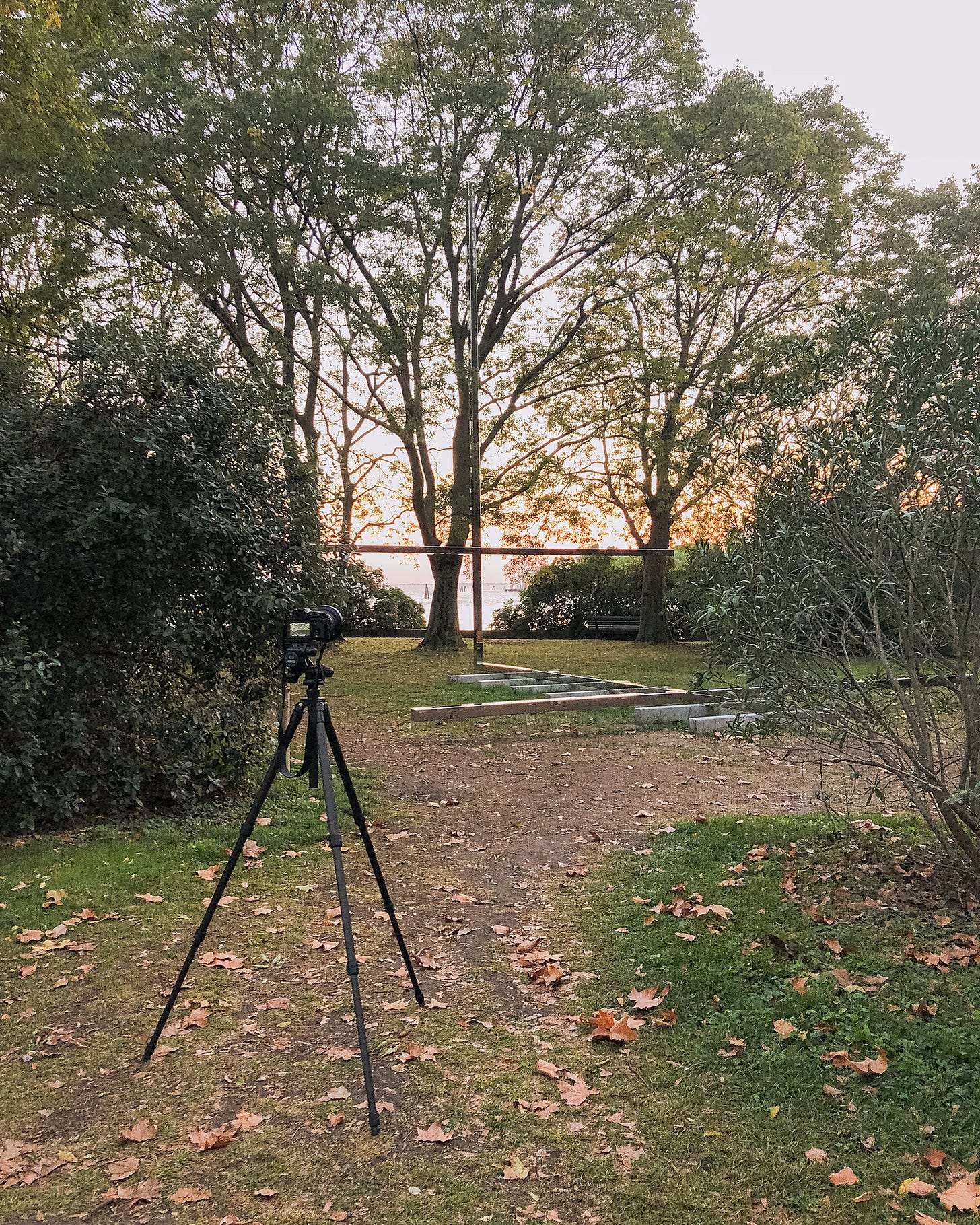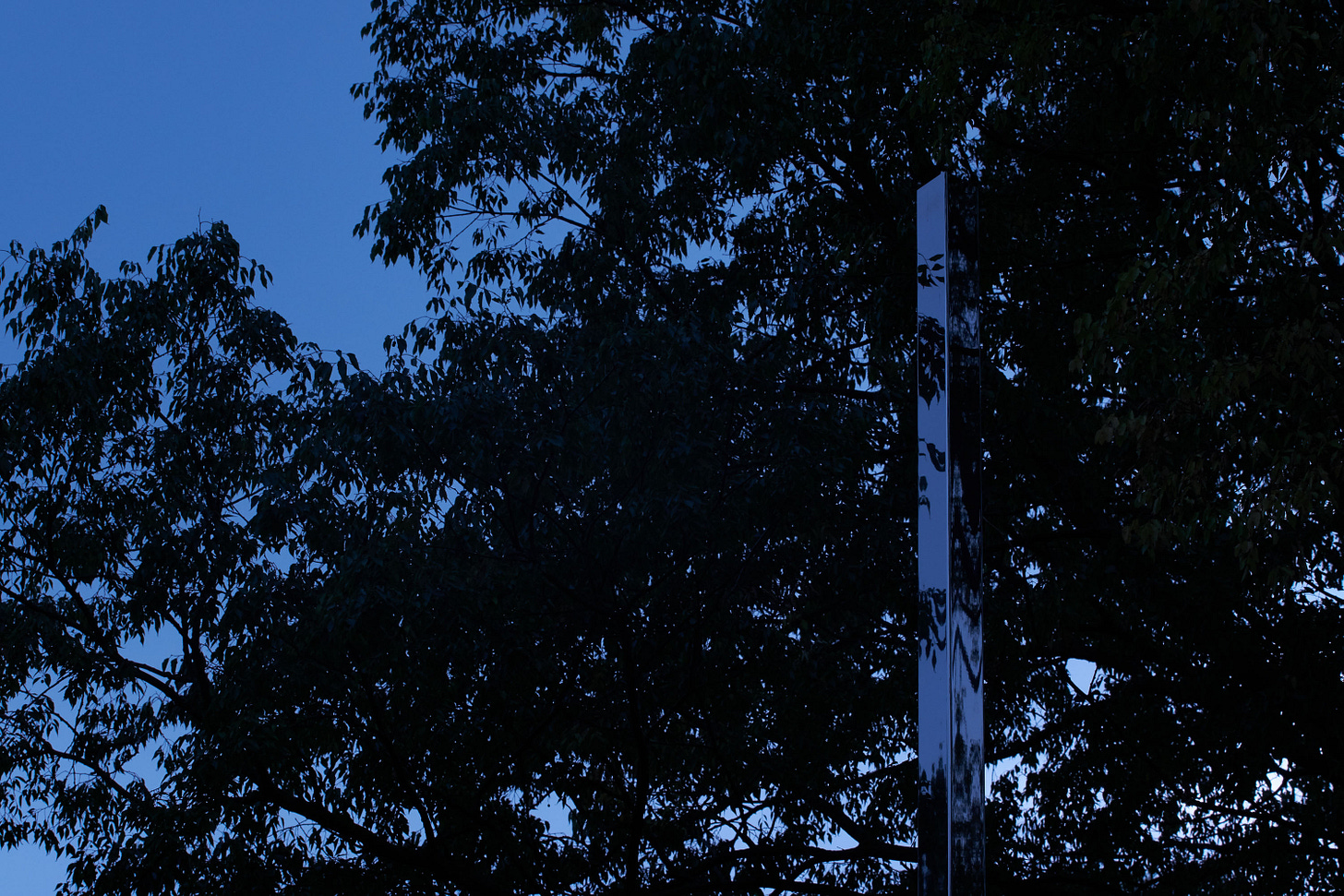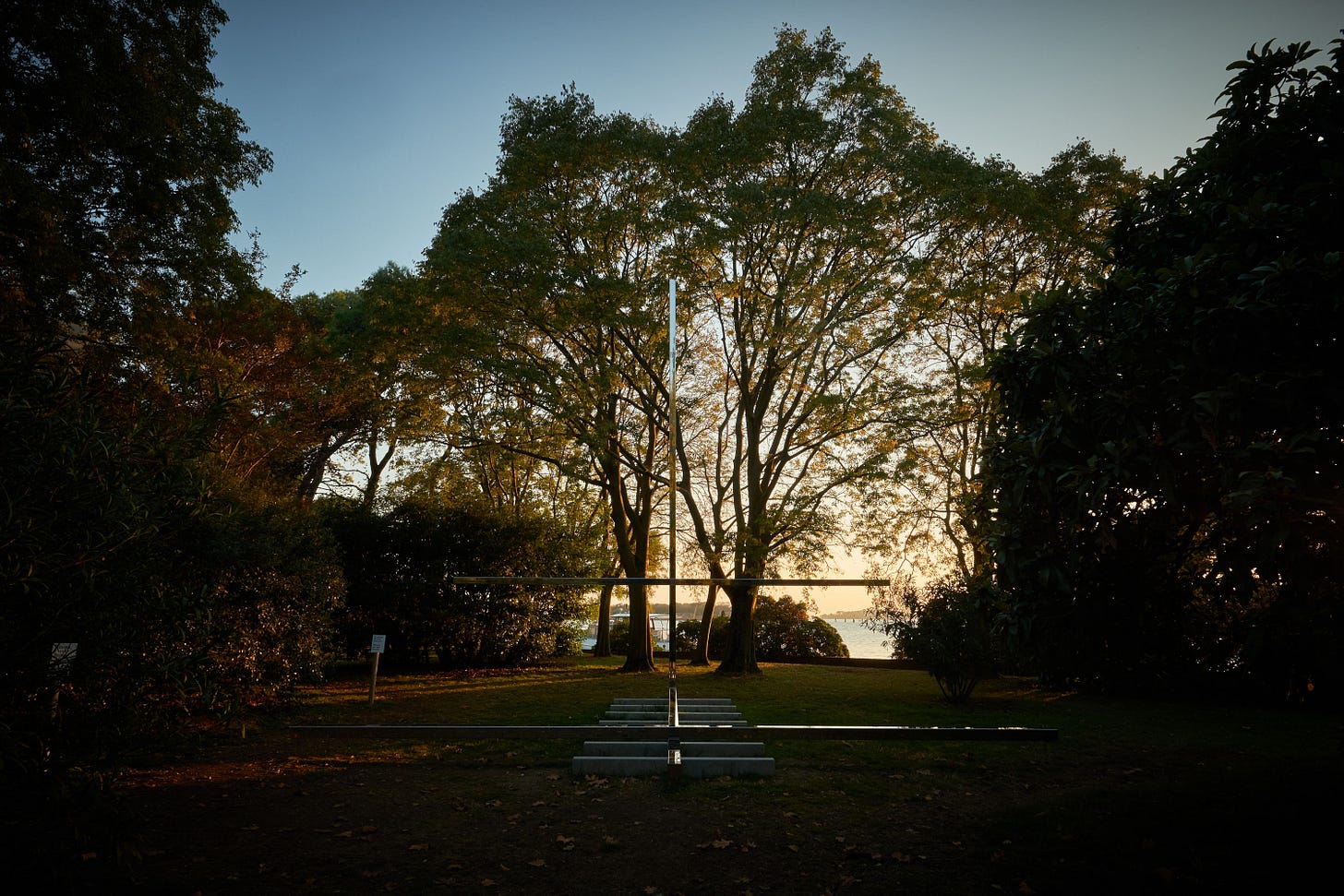The Vatican Chapel by Carla Juaçaba.
Video. 1m39s. 2018.Em 2018, eu fui convidado para produzir três curta-metragens para divulgar as atividades do simpósio “In Our Time: A Year of Architecture in a Day”, no The Metropolitan Museum of Art em Nova York. O programa era patrocinado pela Aesop, com quem eu tinha uma parceria de trabalho há muitos anos. Um destes filmes foi sobre a Capela do Vaticano em Veneza, concebida pela arquiteta Carla Juaçaba.
Eu havia visitado a capela no mês de maio, quando da sua inauguração para a Bienal de Arquitetura. Acomodava-se em torno de outros pavilhões de arquitetos conhecidos, muitos carregados de materialidade, engenhosidade e volume. Em contraste, a capela da Carla era quase invisível, um punhado de linhas refletidas na paisagem. Todos os pavilhões seriam desmontados e transferidos para outro local ao final do ano. Em meio a tantos compromissos – e um publico tão presente que não havia janela para fotografar sem interferências – eu não pude registra-la.
Em outubro retornei para desenvolver o projeto para o The Met. Encontrei a Carla em Veneza, e ela trazia uma notícia daquele mesmo dia: sua capela não seria retirada, e permaneceria indefinidamente na Ilha de San Giorgio Maggiore. Era uma nota carregada de emoção: são raros e poucos os arquitetos contemporâneos com uma obra em Veneza. Ela realizara então que aquela era a obra de toda a vida. Esta emoção foi carregada para a entrevista, gravada numa saleta do hotel em que estávamos hospedados, e que constitui a narração do video.
Documentei a capela com a entrevista em mente nos dias que se seguiram. A Carla acompanhou e aparece nas filmagens, mas sua figura é discreta e distante. Ela preferia assim, e respeitei. Os enquadramentos alternavam do cânone da fotografia de arquitetura, para aproximações abstratas da obra na paisagem. A luz natural era espetacular, sempre. A entrevista, que tratava de aspectos projetuais, construtivos e técnicos, foi reduzida ao essencial. Na montagem, tornou-se um sutil depoimento de um minuto e meio. Não precisava de mais.
Quando me perguntam quais projetos mais me emocionaram, eu sempre menciono esta capela. Não pelo vídeo em si, mas como o processo de criá-lo me ajudou a entender a obra. Aproveito este novo espaço mais amigável a vídeos e prosas, para trazer um pouco dessa história.
In English
The Vatican Chapel in Venice by Carla Juaçaba.
A video and the essence of an architectural project.
In 2018, I was invited to produce three short films to promote the activities of the symposium “In Our Time: A Year of Architecture in a Day” at The Metropolitan Museum of Art in New York. The program was sponsored by Aesop, with whom I had maintained a working partnership for many years. One of these films was about the Vatican Chapel in Venice, designed by Brazilian architect Carla Juaçaba.
I had visited the chapel in May for its inauguration at the Architecture Biennale. It was surrounded by other pavilions designed by renowned architects, many rich in materiality, ingenuity, and volume. In contrast, Carla’s chapel was almost invisible—a handful of lines reflected in the landscape. All the pavilions were set to be dismantled and relocated by the end of the year. Amidst so many commitments—and with so many visitors present that there was no window to photograph without interference—I was unable to document it.
In October, I returned to develop the project for The Met. I met Carla in Venice, and she brought news from that very day: her chapel would not be removed and would remain indefinitely on the Island of San Giorgio Maggiore. It was a deeply emotional revelation—very few contemporary architects have a permanent work in Venice. She then realized that this was the work of a lifetime. That emotion carried into the interview, which I recorded in a small room of the hotel where we were staying, and which then became the narration for the video.
In the days that followed, I documented the chapel with the interview in mind. Carla accompanied me and appears in the footage, but her presence is discreet and distant. She preferred it that way, and I respected her choice. The framing alternated between the canon of architectural photography and abstract approaches of the work in the landscape. The natural light was always spectacular. The interview, which touched on design, construction, and technical aspects, was distilled to its essence. In the editing process, it became a subtle, one-and-a-half-minute testimony. It needed nothing more.
When people ask me which projects have moved me the most, I always mention this chapel. Not for the video itself, but for how the process of creating it helped me understand her work. And today, I take advantage of this new space on Substack, more welcoming to videos and prose, to share a little bit of this story.







Que lindo! É quase palpável o sentimento de estar ali através das imagens. Parabéns!
Tudo absolutamente lindo e tocante!